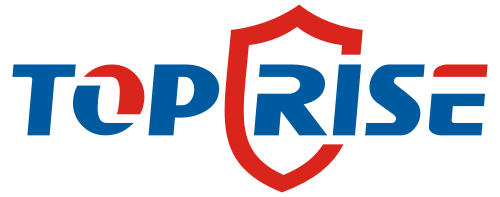One of the key features to look for in purchasing safety glasses is the “X” mark under ANSI Z87.1 standards. This mark indicates that the lenses are treated with a special anti-fog coating. For anti fog safety glasses manufacturers, this marking ensures that the glasses are designed to prevent moisture buildup on the lenses, keeping them clear and fog-free. This feature is essential for professionals in various industries where clear vision is crucial for safety.
In this blog, we will explore the significance of the “X” mark under ANSI Z87.1, its benefits, and why it’s important for anti fog safety glasses manufacturers to prioritize this feature in their products.

What Does the “X” Mark Mean?
The “X” mark next to the Z87 marking on safety glasses indicates that the lenses have been treated with an anti-fog coating. This treatment helps prevent condensation from forming on the lens surface, ensuring clear and unobstructed vision. The “X” mark guarantees that the glasses meet ANSI Z87.1 standards for eye protection while offering an additional layer of functionality: fog resistance.
Anti fog safety glasses manufacturers use this coating to address the common issue of fogging, which can impair vision and create hazardous situations, particularly in industries requiring precise visual focus.
Why Is Anti-Fog Coating Important?
Fogging on safety glasses can significantly affect visibility. In many environments, moisture, temperature changes, or humidity can cause lenses to fog, leading to safety risks. For example, workers in construction, welding, or medical fields can experience fogging, especially when moving between different temperature zones.
Here are some key reasons why anti-fog coating is crucial:
Visibility: Fog-free lenses ensure clear vision, which is essential for tasks requiring accuracy.
Safety: When fog forms, it obstructs vision and increases the risk of accidents.
Comfort: Constantly wiping fogged lenses can be frustrating and reduce productivity.
Durability: Anti-fog coatings help maintain lens clarity over longer periods, extending the life of the glasses.

Benefits of Anti Fog Safety Glasses
The “X” mark is a seal of quality for anti fog safety glasses, but why should you opt for them in the first place? Here are the main advantages:
Improved Visibility: Anti-fog lenses allow for clear and uninterrupted vision, even in humid or high-temperature environments.
Enhanced Safety: Fogging can cause accidents, especially in environments with heavy machinery or intricate tasks. Anti-fog safety glasses reduce this risk.
Comfort: Wearing fog-free lenses means fewer distractions, reducing the need to remove or adjust the glasses constantly.
Long-Lasting Performance: High-quality anti-fog coatings resist fogging and help maintain clarity for longer periods.
Performance in Extreme Conditions: Workers in environments with high humidity, such as welding or laboratory work, can benefit from anti-fog safety glasses that ensure clear sight in challenging conditions.
How Anti-Fog Safety Glasses Work
The anti-fog coating applied to lenses works by creating a thin, invisible layer that prevents moisture from accumulating on the lens surface. This layer allows the moisture to be spread evenly across the lens, preventing the formation of fogging droplets. Unlike ordinary lenses, which trap moisture, anti-fog lenses maintain optical clarity even in fluctuating conditions.
Many anti-fog safety glasses manufacturers also integrate other design features like ventilation or airflow channels to further reduce fogging. These features allow air to circulate around the lens, helping to maintain a clear line of sight.

Industries That Benefit from Anti-Fog Safety Glasses
Several industries rely on anti-fog safety glasses to ensure worker safety and productivity. Here are some key sectors where these glasses are indispensable:
Construction: Workers frequently move between outdoor and indoor environments, leading to temperature fluctuations that cause fogging. Anti-fog lenses help maintain visibility when working with tools and machinery.
Welding: Welders often work in high-heat environments with intense light, both of which can cause fogging. Fog-resistant safety glasses are essential for visibility and safety.
Medical and Laboratory Fields: Doctors, nurses, and lab technicians work in environments with high humidity and are frequently exposed to personal protective equipment like face masks. Anti-fog glasses ensure clear vision during critical tasks.
Manufacturing and Heavy Industry: In factories, where temperature fluctuations, dust, or chemical exposure can lead to fogging, fog-free safety glasses help workers perform tasks safely and efficiently.
Sports and Outdoor Activities: Athletes or outdoor workers, such as landscapers or hunters, also benefit from anti-fog safety glasses in humid or sweaty conditions.

Key Features of Anti-Fog Safety Glasses
Coating Resistance: The anti-fog coating is designed to resist fogging under extreme temperature changes and high humidity.
Durability: High-quality coatings last longer and are often scratch-resistant, meaning that the anti-fog effect lasts for an extended period.
Ventilation: Many anti-fog safety glasses feature additional ventilation or airflow channels to reduce fogging by allowing moisture to escape.
Optical Clarity: Anti-fog lenses maintain the same level of visual clarity as non-treated lenses, ensuring no distortion in vision.
The Role of Anti Fog Safety Glasses Manufacturers
Anti fog safety glasses manufacturers play a crucial role in providing eyewear that meets the highest standards of performance and safety. In particular, anti fog safety glasses manufacturers in China are known for producing high-quality, cost-effective eyewear. These manufacturers are integral to global supply chains, providing anti-fog safety glasses that meet various workplace needs.
By choosing the best anti-fog safety glasses, industries can reduce downtime, improve worker comfort, and most importantly, enhance safety. These glasses are often available through anti-fog safety glasses manufacturers and suppliers who ensure that each pair adheres to ANSI Z87.1 standards.

Conclusion
The “X” mark under ANSI Z87.1 is more than just a label; it’s an indication that the safety glasses have undergone rigorous testing for anti-fog protection. When you choose anti-fog safety glasses, you ensure that your vision remains clear, even in challenging working environments.
For workers in construction, welding, medical, and manufacturing fields, anti-fog safety glasses are essential. Anti-fog safety glasses manufacturers ensure that these glasses not only protect against fogging but also meet the necessary safety standards for impact resistance, UV protection, and durability.


